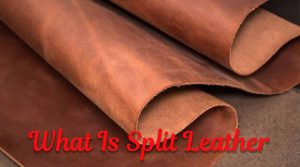
Are Leather Jackets Warm
Are Leather Jackets Warm?
Introduction
Leather jackets have been a staple in the world of fashion for over a century now. From the classic bomber jackets of the early 20th century to the sleek and stylish designs of today, leather jackets have come a long way. However, the one question that has plagued people for years is whether leather jackets are warm enough for the colder months of the year.
In this article, we will explore the insulating properties of leather and the factors that determine the warmth of a leather jacket. We will also compare leather jackets with other materials and see how they hold up in real-life scenarios. Finally, we will give some tips on how to maintain warmth in your leather jacket.

Understanding Leather Jackets
Material Used in Making Leather Jackets
Leather jackets are made from animal hide, which is processed to make it soft and flexible. The most commonly used hides are from cows, although there are also jackets made from other animals such as pigs, sheep, and goats. The quality of the leather depends on the thickness and texture of the hide, with thicker hides generally being more durable and of higher quality.
Types of Leather Used
There are several types of leather used in making jackets, each with its own unique properties. The most common types of leather used are full-grain, top-grain, and split leather. Full-grain leather is the highest quality leather, as it retains the natural texture and markings of the hide. Top-grain leather is slightly lower in quality, as it has been sanded and treated to remove some of the natural markings. Split leather is the lowest quality leather, as it is made from the lower layers of the hide and is less durable and less resistant to moisture.
The Process of Making Leather Jackets
The process of making a leather jacket begins with the selection of the hide. The hide is then cleaned and tanned to make it soft and flexible. The leather is then cut into the desired shapes and sewn together to form the jacket. The final step is to treat the leather to make it resistant to moisture and to give it a finished appearance.
Is Leather Warm?
Explanation of the Insulating Properties of Leather
Leather has good insulating properties due to its dense structure, which helps to trap air and retain heat. This makes leather a great material for jackets, as it provides a good level of warmth without being too heavy or bulky. However, the level of warmth provided by a leather jacket can vary depending on the thickness and quality of the leather used.
Factors that Determine the Warmth of a Leather Jacket
There are several factors that determine the warmth of a leather jacket, including the thickness of the leather, the quality of the leather, and the type of lining used. Thicker leather will provide more insulation and keep you warmer, while higher quality leather will be denser and provide better insulation. The type of lining used also plays a role in determining the warmth of a jacket, as some materials are better at retaining heat than others.
Comparison of Leather Jackets with Other Materials
Leather jackets can be compared to jackets made from other materials, such as cotton, polyester, and down. Cotton jackets are generally lightweight and breathable, but do not provide much warmth. Polyester jackets are durable and lightweight, but also provide limited insulation. Down jackets are very warm, but are often heavy and bulky.
Compared to these materials, leather jackets provide a good balance of warmth and versatility. They are heavier than cotton or polyester jackets, but are still relatively lightweight. They provide better insulation than cotton or polyester jackets, and are more versatile than down jackets. In terms of warmth, leather jackets are generally considered to be on par with down jackets, although the level of warmth will depend on the thickness and quality of the leather used.
In real-life scenarios, leather jackets have been known to provide good warmth in a variety of conditions. For example, a well-insulated leather jacket can keep you warm in cold weather, even in strong winds. It can also provide good protection against rain and snow, making it a versatile choice for outdoor activities.

Maintaining Warmth in Leather Jackets
Lining Material Used in Leather Jackets
The lining material used in leather jackets can have a significant impact on the warmth of the jacket. Common lining materials include flannel, fleece, and synthetic materials such as polyester. Each material has its own unique properties and provides a different level of warmth and comfort.
How to Choose the Right Lining for Warmth
When choosing a lining for warmth, it is important to consider the climate and the conditions in which you will be wearing the jacket. For example, flannel or fleece linings are good for cold and dry weather, while synthetic linings are more suitable for damp or wet weather. It is also important to consider your personal preference and comfort, as some materials may feel more comfortable against the skin than others.
Tips for Maintaining Warmth in Leather Jackets
To maintain warmth in your leather jacket, it is important to follow some basic tips. For example, you should avoid exposing your jacket to excessive moisture, as this can affect the insulation properties of the leather. You should also store your jacket in a cool and dry place, as extreme temperatures can also affect the insulation properties of the leather. Finally, you should take care to clean and condition your jacket regularly, as this will help to keep the leather soft and supple, which will in turn help to maintain its insulation properties.
Conclusion
In conclusion, leather jackets can provide good warmth in cold weather, as long as they are made from high-quality leather and have a suitable lining. The thickness of the leather, the quality of the leather, and the type of lining used all play a role in determining the warmth of a leather jacket. By following some basic tips for maintaining warmth, you can ensure that your leather jacket provides good protection and comfort in cold weather.








